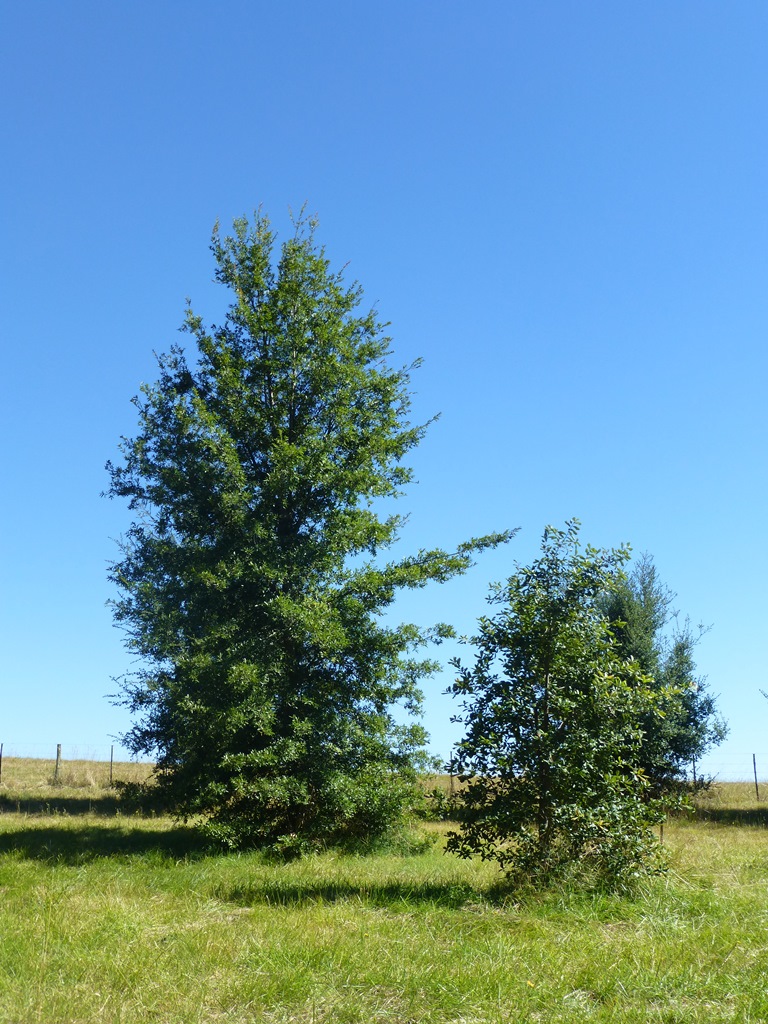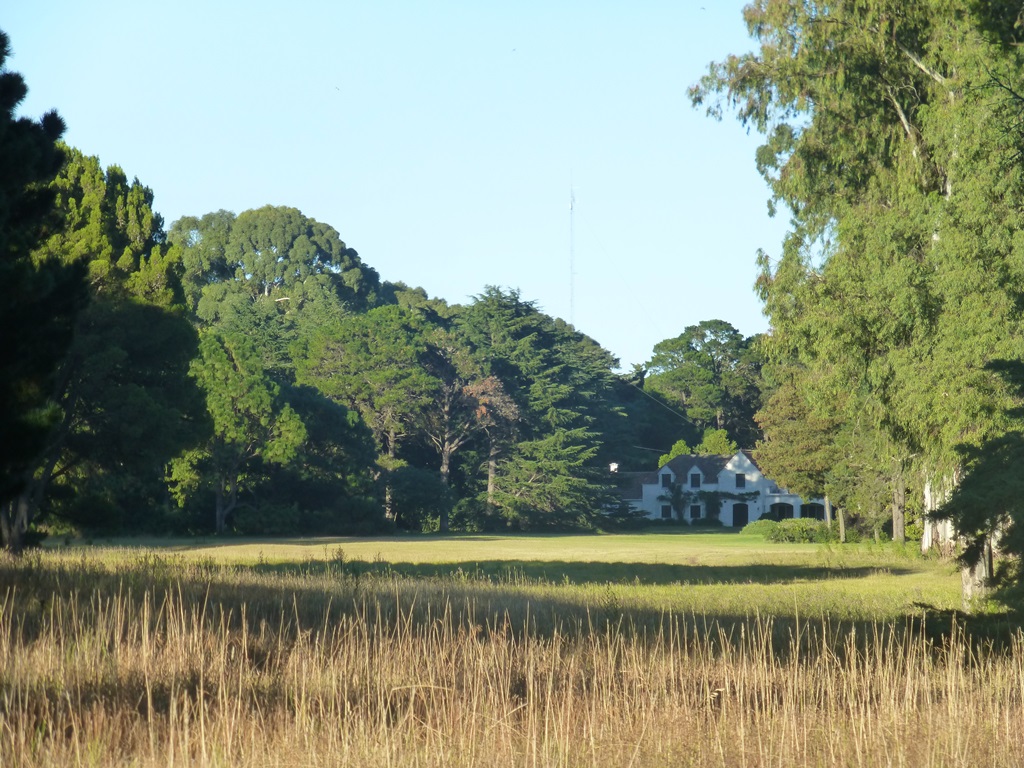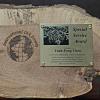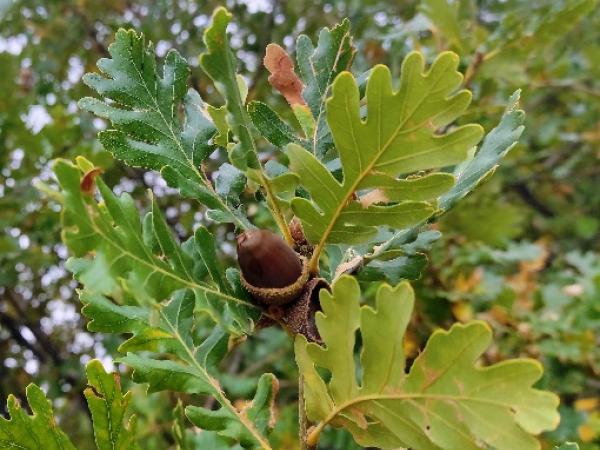Editor's Picks
Plant Focus
First published in Oak News & Notes Vol. 17, No. 2, 2013.
 |
| Peter Laharrague driving round San Miguel Arboretum in his jeep. Quercus ×vilmoriniana in the background. |
In this edition of Member Spotlight we tilt our follow spot southwards to Coronel Pringles, in Argentina, at 38 degrees of latitude below the Equator – almost exactly as far south as when we highlighted Bob Berry in New Zealand – to focus our attention on Peter Laharrague, longtime IOS member and oak collector. Like some other Southern Hemisphere members, Peter is engaged in the somewhat quixotic venture of collecting a genus of plants in a part of the world that lies a great distance from the plants’ natural range. To reach the closest native oak from his arboretum, Peter would have to travel over 4,600 km (2,900 mi) as the crow flies, to the Colombian Andes, where he might find Quercus humboldtii Bonpl.
I visited Peter and his arboretum, San Miguel, in February, in the middle of the summer drought season, when he and his staff were busy providing essential water to his trees, both young and old. As we walked around the plantings of numerous genera of trees, I had the impression that the person I was following, wearing the Basque beret of his French ancestors and clucking with satisfaction or frustration as the case may be, was not so much a tree-collector as a shepherd tending for his flock, making sure that they were protected from the hares, ants or wind that threatened them, and that they had the water they required to keep them alive. Peter inherited from his father a love of trees and from an early age began planting in his property in Argentina, also inherited from his father. This property came complete with an 80-hectare (200-acre) park planted with trees that his father was able to obtain in nurseries in Argentina. As Peter puts it, “My father created his garden without being a landscape architect or a botanist; he just loved trees and began planting what was most popular or generally planted in the area: pines, cedars, cypresses, eucalyptus.”
In the 1980s Peter developed an interest in collecting oaks, perhaps, he says, because of the connection to his Basque ancestors in France, in whose lives oaks would have played an important part, or simply because acorns are easy to germinate. “I began writing to nurseries, and to Kew Gardens, who very kindly used to send me acorns. I always had the problem of reversed seasons, the fact that in October, our spring, I had to sow the
 |
| Quercus crassipes (left) |
acorns or put them in prechilling, if they were red oaks, then sow them in January, and two months later I would have to put the small seedlings in a greenhouse, because if not they would not survive, being so tender.” Soon he felt the need to get in contact with others who shared his passion: “One day I saw in a publication of the International Society of Arboriculture a little advertisement about the International Oak Society. I immediately got in contact. It was after their first Conference at The Morton Arboretum in 1994. I corresponded with Steve Roesch, one of the founders, and he began sending me a lot of seed.” Peter joined the IOS and later traveled to California for the second Conference: “The California tour was wonderful not only because it opened the scope about oaks, but also about all vegetation and trees of California. Then we had the seed exchange, which I have always had to accept as a seed gift, as we can’t exchange anything, coming from the Southern Hemisphere.” Later on Peter was able to participate in Oak Open Days in France and in the process visit arboretums such as the Arboretum national des Barres. He is particularly proud of having in his collection an oak grown from an acorn produced by the original Q. ×vilmoriniana A. Camus that used to grow in that arboretum.
Through his interest in oaks he was able to meet two other oak collectors in Argentina. “I got acquainted with Duncan Cameron through an article I wrote for the Sociedad Argentina de Horticultura, about the oaks I was growing in this area. Duncan read the article then phoned me to get in contact and from then on we had a very deep friendship, he used to give me some plants and some of them are still here.” An Italian member, Giuseppe Guazzone, planted oaks on his farm in Argentina, and together this trio of quercophiles were for many years the three musketeers of the Argentine oak scene. Sadly, Peter lost his two friends over the last few years, and I could not help noticing his eyes misting up when he talked about them.
Planting oaks in the southwestern section of the Argentine pampas presents several challenges. “The most important thing is water; water and wind. If we don’t water the trees, we would lose them. If there is a fortnight without a good rain we go out and water, even in winter with the evergreen oaks. Water can be provided through a hose, from a moving tank, or you can leave the 5,000-liter (1,300-gallon) tank to empty in an
 |
| San Miguel Arboretum |
area of four or five big trees. Sometimes people say you only need to water small trees, but big trees are much more demanding and sometimes they don’t give you any warning and next day they are dead.” When planting his oaks, he prefers to avoid the risks involved in transplanting: “I try to plant if possible in the first year after germination, directly with the pot, then apply mulch and water and place stakes for support as well as protection against hares, which were a great concern (there are fewer of them now), as they would gnaw the bark or break the trees.”
When I asked which part of the life cycle of an oak was his favorite, he chose that of the young tree, when it is able to take an appealing shape through judicious pruning. But he is not obsessed with having all his trees grow perfectly straight: “In general I don’t prune unless there is a completely asymmetrical or co-dominant stem. I am very concerned about this question of co-dominant stems because if they are left they can break and then both stems break and you lose the whole tree. I also try to leave low branches when they are not dead. For two reasons: one, because I consider they are still photosynthesizing and thus helping the tree grow; second, they are great protection against mowers, tractors and the like.” Peter’s favorite species of oak is Pyrenean oak, Quercus pyrenaica Willd. One of the reasons is of course that it remits to the area of the Pyrenees and the Basque country, the land of his ancestors, but another reason has more to do with its behavior in the area where Peter plants it: “It is an oak that begins leafing out very late in the season and here we have late frosts which have a terrible effect on other oaks such as Q. robur that begins leafing in September, at which stage we may have one of those terrible frosts that last all night and all the leaves are gone and the tree must make an effort to sprout again. But I have never had a Q. pyrenaica that was frosted because the late frosts are mid-November and they sprout later than that. And it is lovely to see the new leaves, they are like little rabbits, covered in velvet, and the flowering is also very nice, with all the stamens.”
Regarding the long-term behavior of oaks in Argentina, Peter explains that there is little experience to go on, as very few trees exist that have been planted more than a century ago. “There are wonderful specimens of Q. robur, Q. ilex, Q. imbricaria, which grow almost at double the speed they do in the Northern Hemisphere. Will they last as long? Most likely not. With fellow IOS member Duncan Cameron we found a remarkable specimen of Q. suber in Uruguay, which is recorded in the Guide illustré des Chênes, and there are other trees here that, when compared with the champions in their native habitat, are doing very well for their age.” Another aspect of oak behavior that Peter has noticed in his region is that oaks do not appear to follow the typical masting pattern of northern climes: “Unlike what happens in Europe, where you have one good year of mast production and then a year that is not so good, here we have rather good production on a regular basis, particularly in Q. robur, Q. rubra and Q. palustris.” He has also remarked that his oaks tend to start fruiting at a relatively early age, usually after 10 or 11 years.
Since he began planting at San Miguel in 1975, Peter has planted 5,548 trees (an impressive average rate of 150 a year), mostly grown from seed, including a large number of oaks, and in the process added on another 20 ha (50 ac) to the park, which currently covers 100 ha (250 ac). I asked him what it was that kept him going: “My objective is pleasure. One day a visitor congratulated me because I was fixing carbon. I said, ‘Thank you very much, but that is not my purpose, I do it for pleasure, I love trees… just for pleasure.’”
Roderick Cameron















